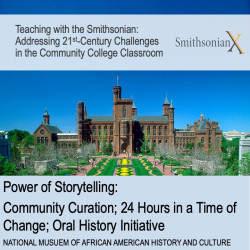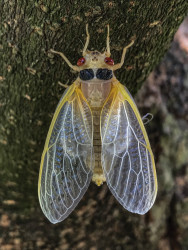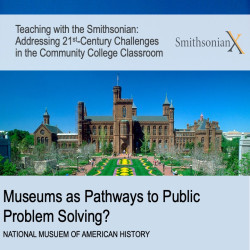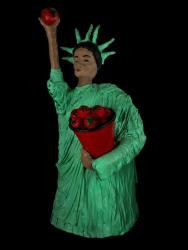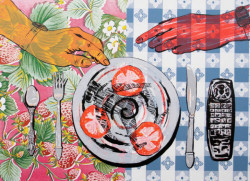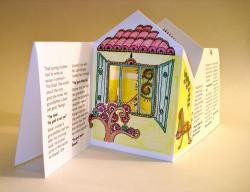Philippa Rappoport
I work in education and engagement, teacher professional development, and outreach at the Smithsonian Office of Educational Technology (OET), and have a particular interest in developing and producing trainings, programs, teaching techniques, and platforms that foster deep learning and contribute knowledge to improve practices in museum and preK-16 education and engagement. At OET over the last decade+, I created digital assets for schools, families, and new immigrant English Language learners to complement teacher professional development and pan-Smithsonian programming, including Learning Lab teaching collections, YouTube videos with tradition bearers, a handmade family stories book-making website, and online heritage tours.
Philippa Rappoport's collections
Power of Storytelling (National Museum of African American History and Culture)
 Philippa Rappoport
Philippa Rappoport
Personal Responses to Covid-19: A Digital Storytelling Workshop Using the Smithsonian Learning Lab (for DC Public School educators)
 Philippa Rappoport
Philippa Rappoport
Personal Responses to Covid-19: A Digital Storytelling Workshop Using the Smithsonian Learning Lab
 Philippa Rappoport
Philippa Rappoport
Origami Cranes: Activity and Background Information
 Philippa Rappoport
Philippa Rappoport
Origami Animals: Demonstration Videos and Background Information
 Philippa Rappoport
Philippa Rappoport
Nicholasa Mohr and New York's Puerto Rican Migration
 Philippa Rappoport
Philippa Rappoport
National Museum of the American Indian: Saving Sacred Spaces
 Philippa Rappoport
Philippa Rappoport
Museums as Pathways to Public Problem Solving? (The National Museum of American History)
 Philippa Rappoport
Philippa Rappoport
Migrations in American History: The Making of "Many Voices, One Nation"
 Philippa Rappoport
Philippa Rappoport
Making "Family Memory" Storybooks: Fun for the Whole Family
 Philippa Rappoport
Philippa Rappoport
Making a "Things That Make Me Me!" Family Storybook
 Philippa Rappoport
Philippa Rappoport
Making a "Kitchen Memories" Family Recipe and Storybook
 Philippa Rappoport
Philippa Rappoport

